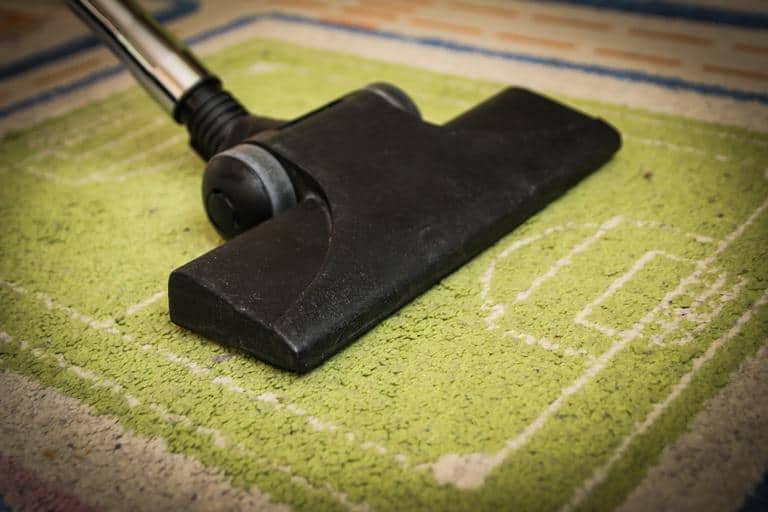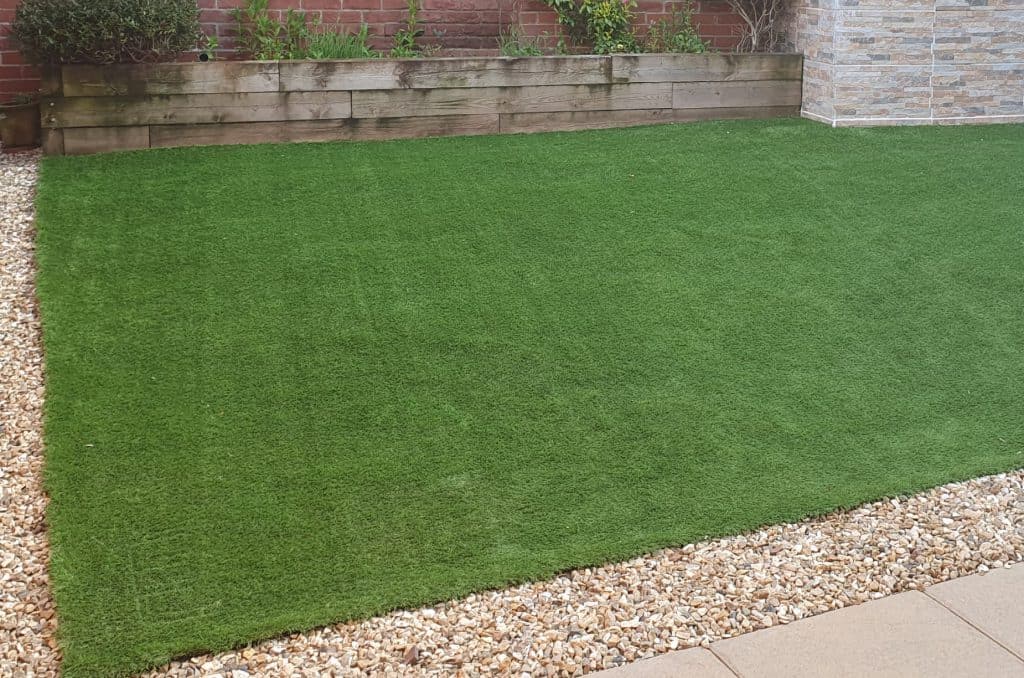Many people prefer installing synthetic turf on their lawn, inside their houses, or even in bathrooms (yes, we were pretty surprised too) because it presents a low-maintenance landscaping option. You get to enjoy the green without having to spend hours on watering, fertilizing, aerating, and cutting it down.
It is a cost-effective solution; this is because it only requires a one-time investment for most cases. Most turf is waterproof so you can hose it down as well. However, what about larger debris or hair on your turf? How to clean that? A common question people ask is that can fake or artificial grass be vacuumed?
There are two major considerations you need to make when vacuuming turf/artificial grass. When vacuuming or “hoovering,” you might remove the infill as well. If that happens, your artificial grass may not feel as ‘realistic’ anymore. Secondly, if your vacuum cleaner is too powerful, it can loosen the turf, which might lead to shifting or sagging.
Can Fake or Artificial Grass Be Vacuumed – Getting Into the Details

Most people often get away with spraying down their artificial grass about twice a month. This helps them removed dirt, but larger debris that gets lodged in the turf, and pet hair can’t be removed with this method. This will particularly be a problem if you have a tree on your lawn as well. Not only will you have more pet hair near the tree, but you will also find more bird feathers and rodent hair.
By hosing down your turf, the hair and feather will settle, thus creating a mess. Of course, instinct suggests that the best solution to that is to vacuum the grass to make debris removal faster and easier. But as mentioned above, you risk sucking up the infill as well, which will require you to completely remove the turf, add more topsoil, and lay the grass back again. This isn’t an issue if your grass isn’t on the lawn but your patio or walkway. In that case, you will face another issue.
Vacuuming too often will also lead to problems of its own, loosening the turf and may end up introducing empty patches throughout your lawn. Your floor will start getting exposed, and you will have no option other than getting your turf replaced or repaired, both of which are expensive ventures, to say the least.
There is another solution as well. You can use bagless vacuum cleaners, which allow you to pull the debris back out. Just make sure that the vacuum cleaner isn’t too powerful. Bagless cleaners are usually very powerful and may end up damaging your turf. We recommend you invest in a cleaner with an adjustable motor.
Put the cleaner on low and start vacuuming. You might have to spend a bit more time cleaning your yard this way, but you will find that your fake grass will ‘live on’ for quite a while.
Refilling Infill
Even on low power, you will find that the fill underneath your artificial grass will get vacuumed nonetheless. However, with the bagless vacuum cleaner, you will be able to put the debris collected through a sifter, which will help you separate the infill from the hair and debris, effectively giving you a clean infill. This method has the benefit of getting rid of any weed seeds and pests present in the mix as well, so it’s a win-win for you. You can then redistribute the infill by sprinkling it on your turf and hosing it down with water. If you think you removed too much from one point, you can add it back there. After one of the two watering sessions later, the infill will settle back as if nothing happened!
However, the larger your lawn is, the more work it becomes. Determining which areas need more infill may also be a problem. If you applied artificial grass because of a shortage of water or simply because you didn’t want to water your lawn now and then, this method will be counter-productive. After all, the goal was to spend less time and energy on your lawn, right?
Before moving on to the next section, we need to point out that the issues mentioned above won’t start arising the moment you start up your vacuum cleaner. You might not see any infill in your bag the first few times you vacuum; instead, you will only find clean, impeccable grass. It is understandable to assume at this point that you can vacuum fake/artificial grass.
Some vacuum cleaners are advertised specifically for cleaning turf. The problems mentioned above will start arising a few times after you have vacuumed your lawn.
Alternatives to Vacuuming Artificial Grass

There are much better options you can consider as alternatives to vacuuming your artificial grass. Yes, you may get away with the vacuum cleaner once, twice, 10, or even 20 times. However, over time, the integrity of your grass will start suffering, and the worst part is that you won’t even know there’s an issue with your grass. Others will notice it in your stead!
Other options that you can go for include raking, sweeping, manual cleaning, or even hire a service to help you clean the turf. You can remove dust and debris with a garden hose, broom, turf, and finally a turf rake (made out of plastic) to remove any debris, hair, and feather that the hose might have missed.
You also have the option of using a blower to remove dry debris from your lawn. However, the issue caused by using a vacuum may also arise here, i.e., it might blow away your infill as well.
Removing Large Pieces Manually
The best way to keep your fake/artificial grass clean is to remove larger debris, such as rocks and leaves, manually every day. You will have to work a bit on the first day since you will have to remove debris collected over several days/weeks/months, but once you start cleaning it every day or every other day, the process will become a lot easier.
There is a very good chance that you may have kids around who don’t mind earning a buck or two against cleaning your lawn every now and then. You can ask a child to help you clean your lawn every week, and you can pay them $5 per week!
Lawn Blowers
These are particularly useful on smaller lawns. Simply turn on your blower (low power) and start wiping away the debris. Keep an eye on what you blow away and where. Make a point of ensuring that your debris isn’t headed into your neighbor’s lawn, and more importantly, keep an eye on whether you’re blowing away just debris and not your infill along with it.
If you see the infill getting blow away or your turf’s blades, turn your blower down. If it’s all the way down, we recommend pulling your blower back or turning it all altogether. Before you begin, walk on the whole ground to get a feel for it and repeat the process after you’re done blowing the debris away. Feel for any areas that may require infill to be refilled.
